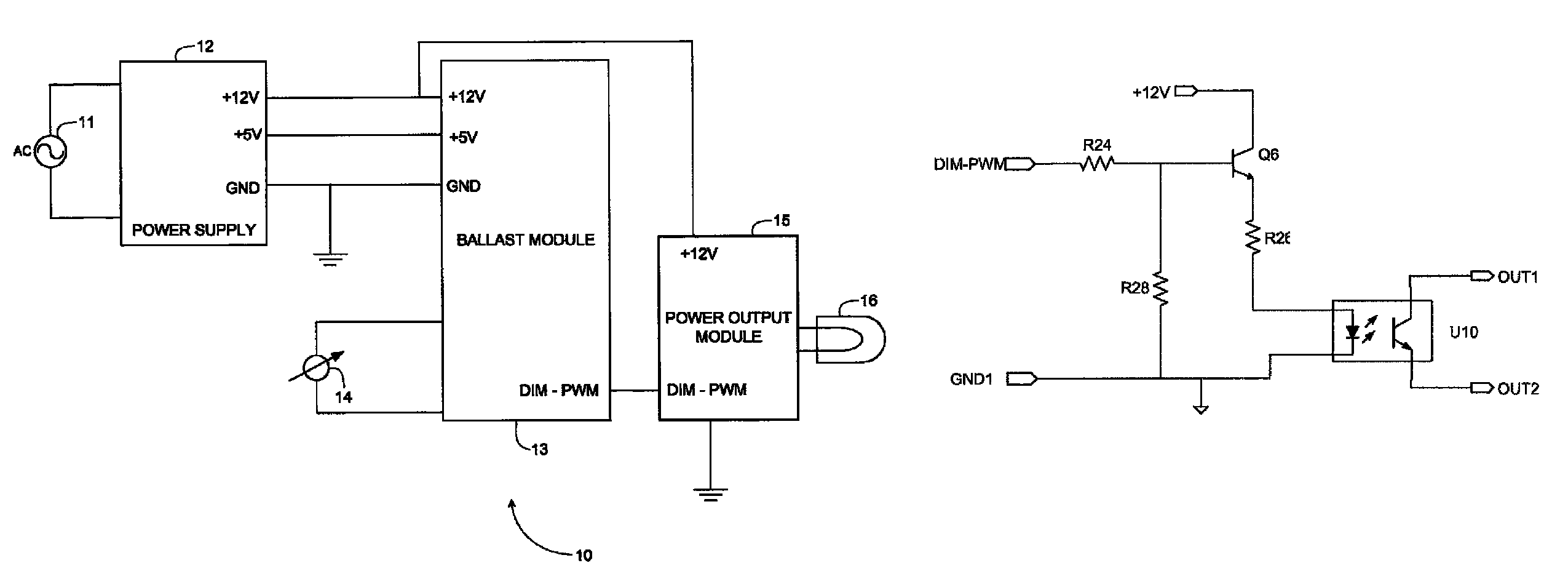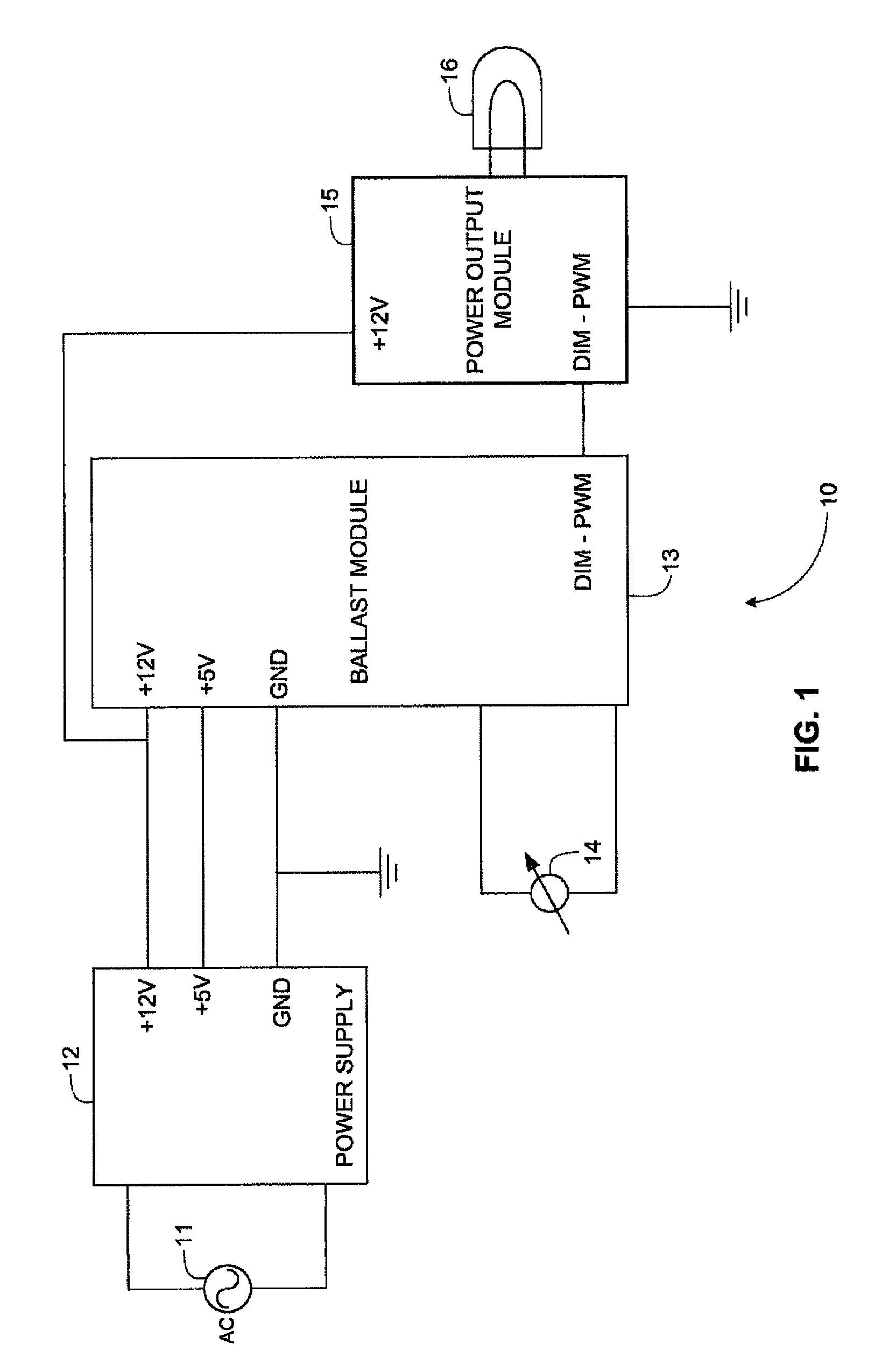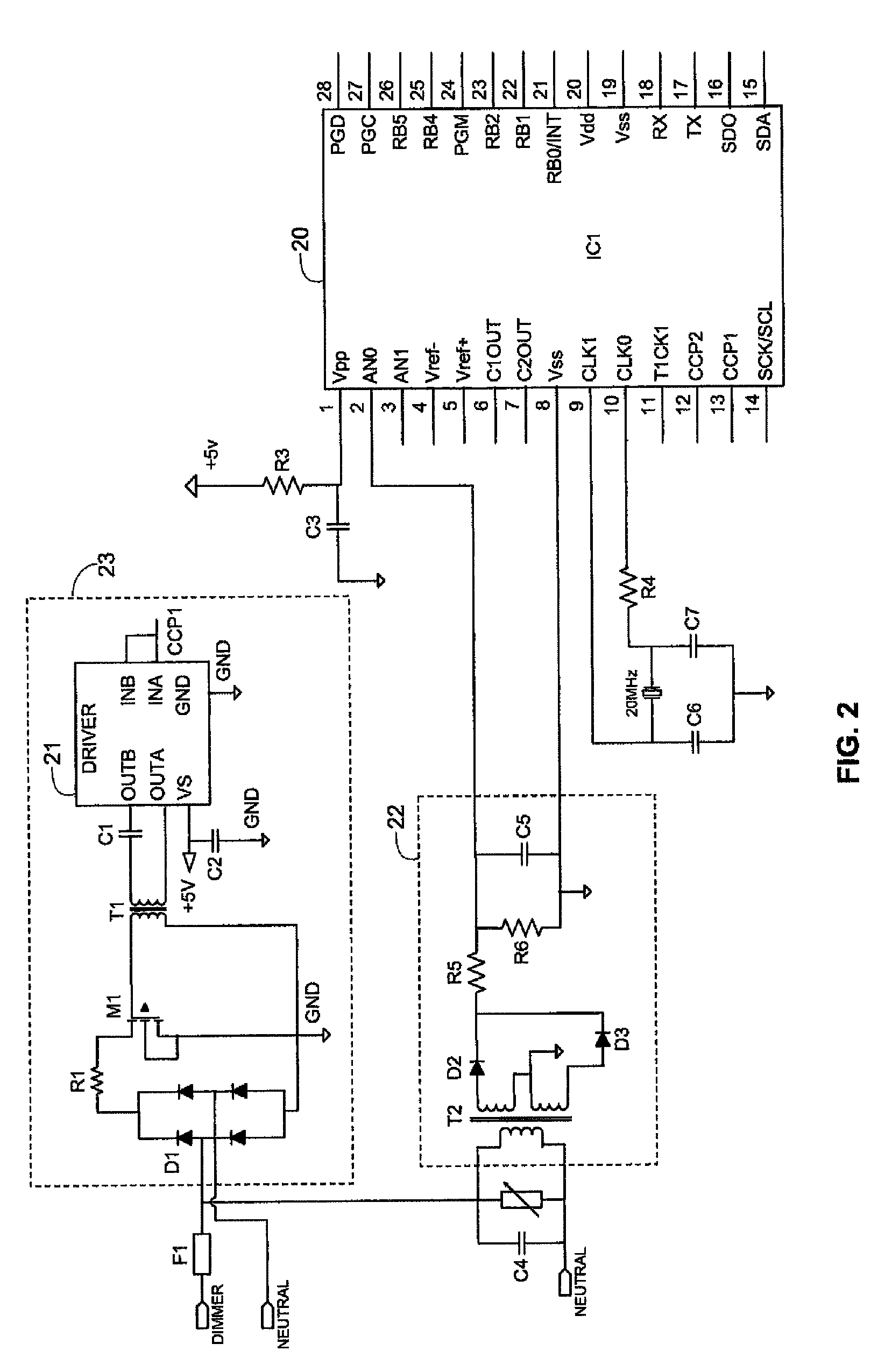Controller and method for controlling an intensity of a light emitting diode (LED) using a conventional AC dimmer
a technology of light emitting diodes and controllers, applied in the direction of electric variable regulation, process and machine control, instruments, etc., can solve the problems of flicker, high frequency harmonics, and the power of leds using dc typical converters,
- Summary
- Abstract
- Description
- Claims
- Application Information
AI Technical Summary
Benefits of technology
Problems solved by technology
Method used
Image
Examples
Embodiment Construction
[0033]FIG. 1 is a block circuit diagram showing functionally a LED dimmer circuit 10 according to an embodiment of the invention. An AC main supply 11 is fed to a power supply 12 that has +5 and +12 volt outputs fed to corresponding inputs of a ballast module 13. The ballast module 13 constitutes a control circuit that has control inputs coupled to a conventional AC lamp dimmer 14 and includes a pulse width modulation circuit having an output shown as DIM-PWM that varies according to the firing angle of the dimmer 14. The output DIM-PWM of the ballast module 13 is coupled to a power output module 15 that is powered by the +12 V output of the power supply 12 and that has an output to which one or more LEDs 16 are coupled.
[0034]It will thus be noted that in the circuit shown in FIG. 1, the AC dimmer 14 serves only to feed a signal indicative of its firing angle to the ballast module 13. The power supply 12 is fed directly from the AC mains supply 11, which may be a universal power sup...
PUM
 Login to View More
Login to View More Abstract
Description
Claims
Application Information
 Login to View More
Login to View More - R&D
- Intellectual Property
- Life Sciences
- Materials
- Tech Scout
- Unparalleled Data Quality
- Higher Quality Content
- 60% Fewer Hallucinations
Browse by: Latest US Patents, China's latest patents, Technical Efficacy Thesaurus, Application Domain, Technology Topic, Popular Technical Reports.
© 2025 PatSnap. All rights reserved.Legal|Privacy policy|Modern Slavery Act Transparency Statement|Sitemap|About US| Contact US: help@patsnap.com



